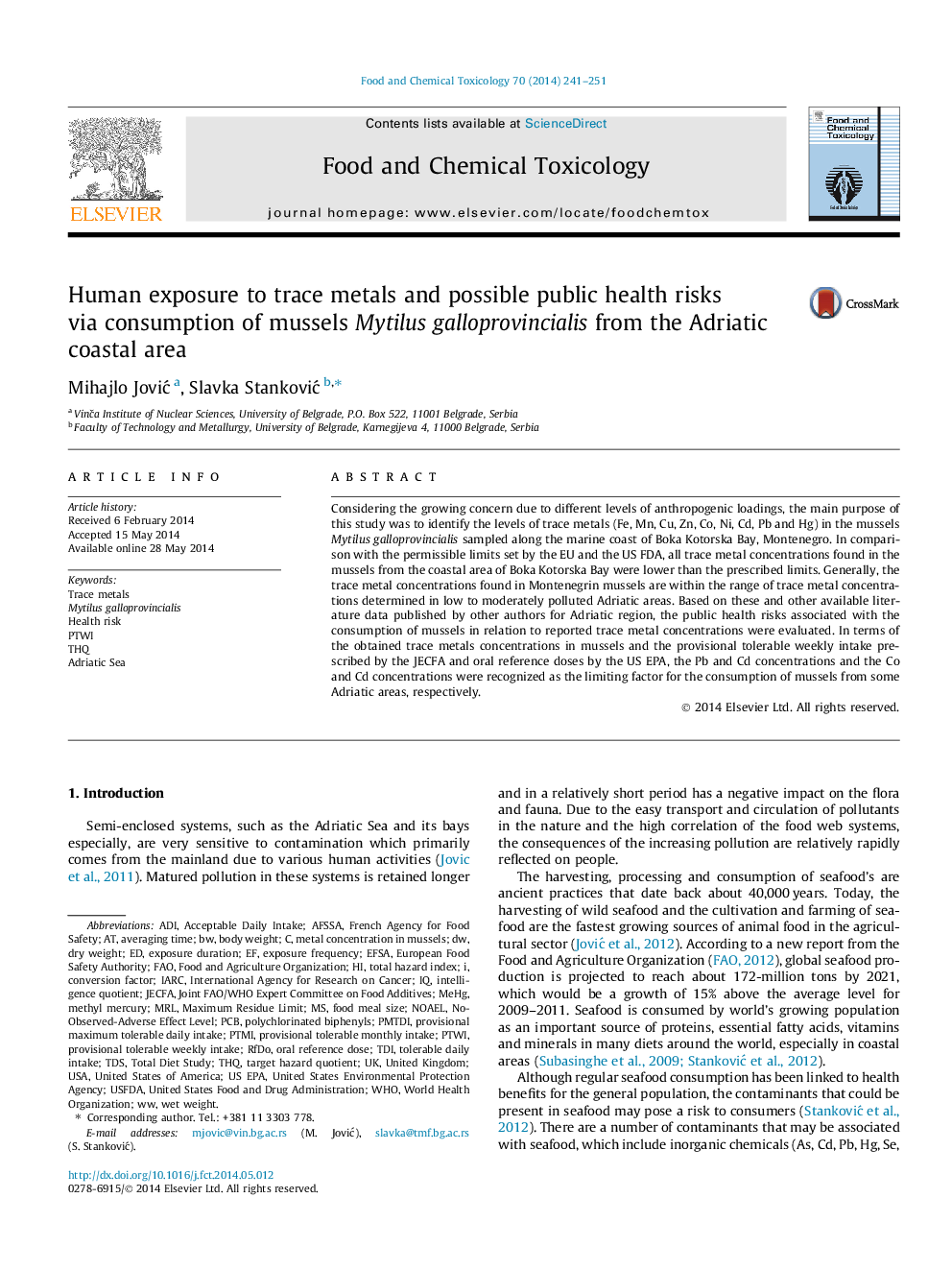| کد مقاله | کد نشریه | سال انتشار | مقاله انگلیسی | نسخه تمام متن |
|---|---|---|---|---|
| 5850191 | 1561774 | 2014 | 11 صفحه PDF | دانلود رایگان |

- The public health risks associated with metals concentrations in Mytilus galloprovincialis from Adriatic were reported.
- The Cd, Co and Pb were recognized as limiting factors for mussel consumption in relation to THQ and PTWI.
- High level mussels consumers should pay particular attention to the amount of mussels in their diets.
- This manuscript considerably contributes to a database regarding the safety of the mussel consumption.
Considering the growing concern due to different levels of anthropogenic loadings, the main purpose of this study was to identify the levels of trace metals (Fe, Mn, Cu, Zn, Co, Ni, Cd, Pb and Hg) in the mussels Mytilus galloprovincialis sampled along the marine coast of Boka Kotorska Bay, Montenegro. In comparison with the permissible limits set by the EU and the US FDA, all trace metal concentrations found in the mussels from the coastal area of Boka Kotorska Bay were lower than the prescribed limits. Generally, the trace metal concentrations found in Montenegrin mussels are within the range of trace metal concentrations determined in low to moderately polluted Adriatic areas. Based on these and other available literature data published by other authors for Adriatic region, the public health risks associated with the consumption of mussels in relation to reported trace metal concentrations were evaluated. In terms of the obtained trace metals concentrations in mussels and the provisional tolerable weekly intake prescribed by the JECFA and oral reference doses by the US EPA, the Pb and Cd concentrations and the Co and Cd concentrations were recognized as the limiting factor for the consumption of mussels from some Adriatic areas, respectively.
Journal: Food and Chemical Toxicology - Volume 70, August 2014, Pages 241-251